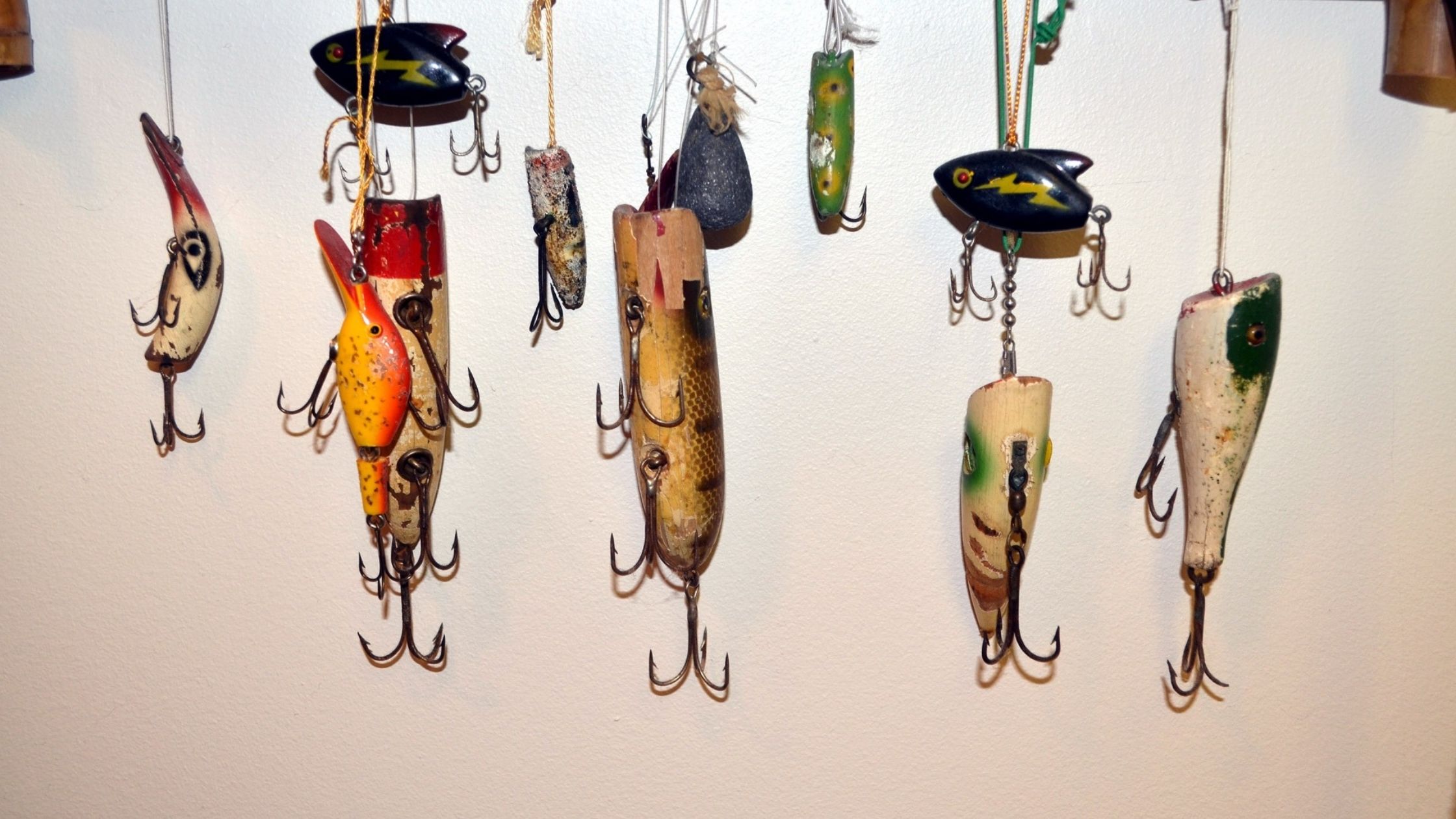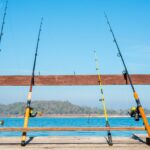A fisherman doesn’t need to be told how important fishing lures are. However, if you’re just a beginner at fishing, you may not know how necessary the right fishing lures are in your fishing expedition. A fish won’t just swim to you – you’ve got to lure them to yourself, and that’s what fishing lures do.
Fishing lures have been around for as long as people have been catching fish. Back in the day, when the number and variety of tools were quite limited, people used to make their own fishing lures. The earliest fishing lures were made of bronze and bone. In fact, some vintage fishing lures made of bronze are still available today – only that they’re so valuable that they fall in the category of collectibles.
Spoon lures date back to the 8th century. They were first made and used by Nordic people from the 8th to 13th century AD.
Tin minnows were first used by Englishmen in the 18th century. Realistic rubber imitations of grubs and bugs were first made in 1800. The spoon fishing lures are as old as the 1700s. Artificial baits date back to the 19th century.
Fishing lures were made commercially for the first time in the late 19th century in the United States. They were made following the same ideas that the craftsmen followed to make homemade fishing lures – the only difference was that they were now produced on a much larger scale. And today, numerous types of fishing lures are manufactured commercially around the world.
How to Choose Fishing Lures
The success of your fishing expedition depends entirely on the use of the right fishing lures. Not all types of lures are suitable for all fish types. Not all fishes will be attracted to all types of lures, so you need to be mindful of various factors when choosing a fishing lure.
If you need assistance choosing the right fishing lures, you’ve come to the right place. Below are the various factors that must be considered before choosing a fishing lure for your next fishing trip.
Type of Fish
One of the most important factors you need to consider when choosing a fishing lure is the type of fish you plan to catch. Is it big or small fish? Does it chase the lure or attack it? Does it swim on the surface, or is it found deeper in the water? Once you’re aware of the basic behavioral characteristics of the fish that you want to catch, you can easily choose the right type of fish lure.
Type of Water
The type of water that you’re fishing in is also a very important consideration. If the water is clear and clean, you won’t need flashy fishing lures. Subtle and natural-looking fishing lures would do the job well. However, if the water is dirty and dark, you’ll need to buy fishing lures that are bigger, brighter, and flashier so that the fish are able to see it. The use of the right fishing lure will improve your chances of catching fish.
Size
Another important consideration when choosing a fishing lure is the size. Fishing lures are available in a variety of sizes, from mini lures to bigger ones. Smaller lures are suitable for smaller fishes, while bigger ones are suitable for luring larger fish. A smaller fishing lure might attract the fish, but it might slip from the fish’s mouth. Similarly, if the lure is too big for the fish, it won’t fit into the fish’s mouth and will not be of any help.
Hooks
The best type of fishing lures are ones that have hooks on them. The advantage of using fishing lures with hooks is that once the fish is attracted to it and it tries to grab it in its mouth, the hook will catch the fish and make it difficult for the fish to escape – ensuring that you get the fish on your hook. There are two types of hooks; barbed and barbless. Barbed hooks are a better option as they make it extremely difficult for the fish to escape.
Lure Buoyancy
Another important factor that you shouldn’t overlook when choosing a fishing lure is the lure’s buoyancy. Some lures float on the surface of the water while others sink deep down. Which one do you need and when? Well, the answer to this question is pretty simple. Different fishes inhabit different parts of the water column. Some are found closer to the surface, while others swim deeper in the water. If you’re fishing for a fish variety that swims near the surface, you’ll need surface lures. However, you’ll need bottom baits for fishes that are found deeper in the water.
If you keep all the above-mentioned factors in your consideration, the chances that you’ll end up with the right lure are quite high.
Types of Lures
Now that you know there are different types of fishing lures and how the type of fishing lure affects your fishing experience, now’s the right time to discuss fishing lures in detail.
Plugs
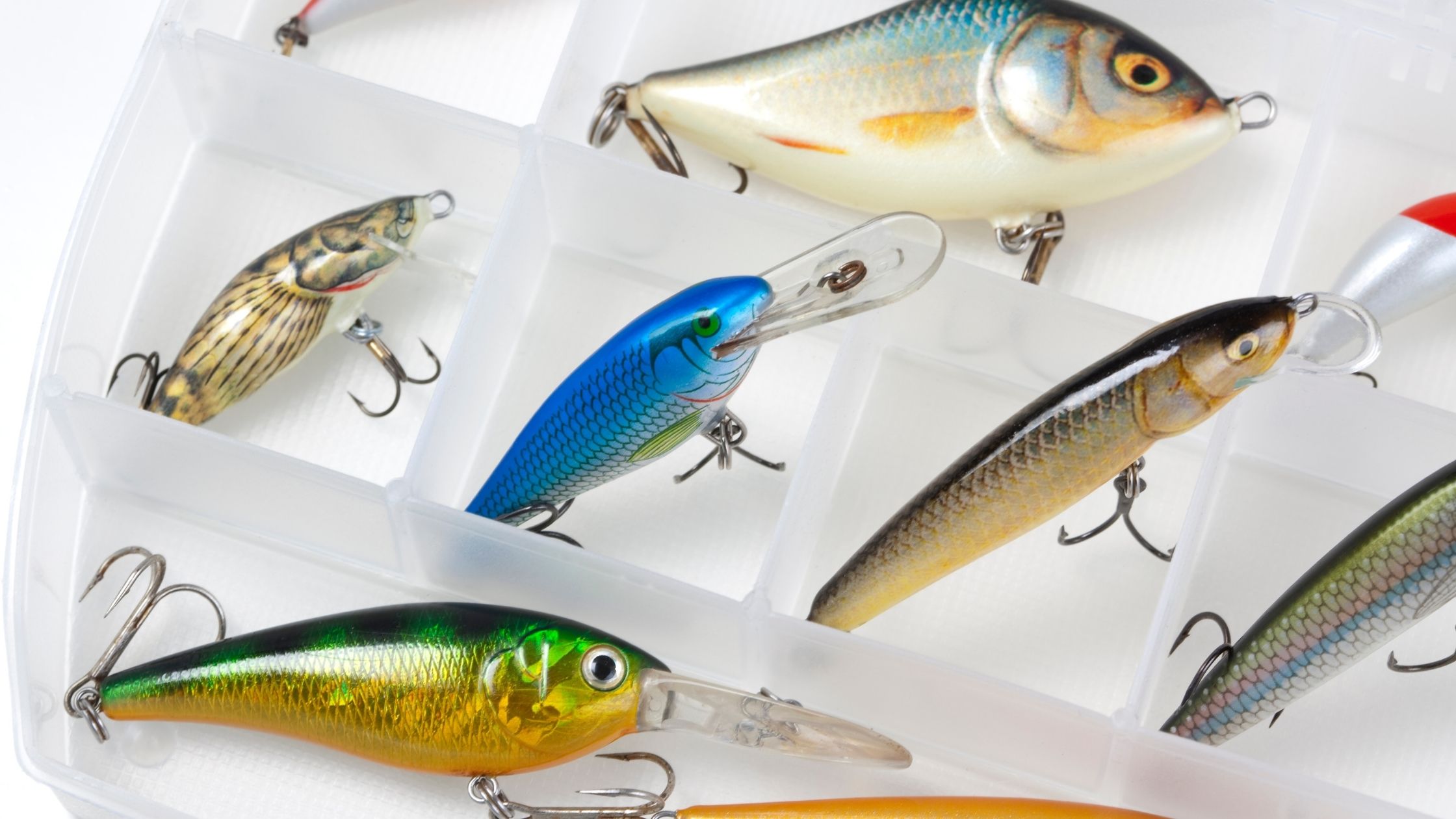
Plugs are the most common type of fishing lures. They’re made of hard, hollow plastic. They’re made in a shape and color that resembles baitfish or any other prey to which fish might be attracted. There’s a thin sheet of plastic or metal attached to the front of plugs fishing lures which is called the lip. This part of the fishing lure is adjustable most of the time. It’s made this way so that it wobbles and creates motion to attract fish. Plugs are equipped with multiple treble hooks. Plugs come in varying designs. They can either be floating plugs, hovering plugs, sinking plugs, or diving plugs.
Jigs
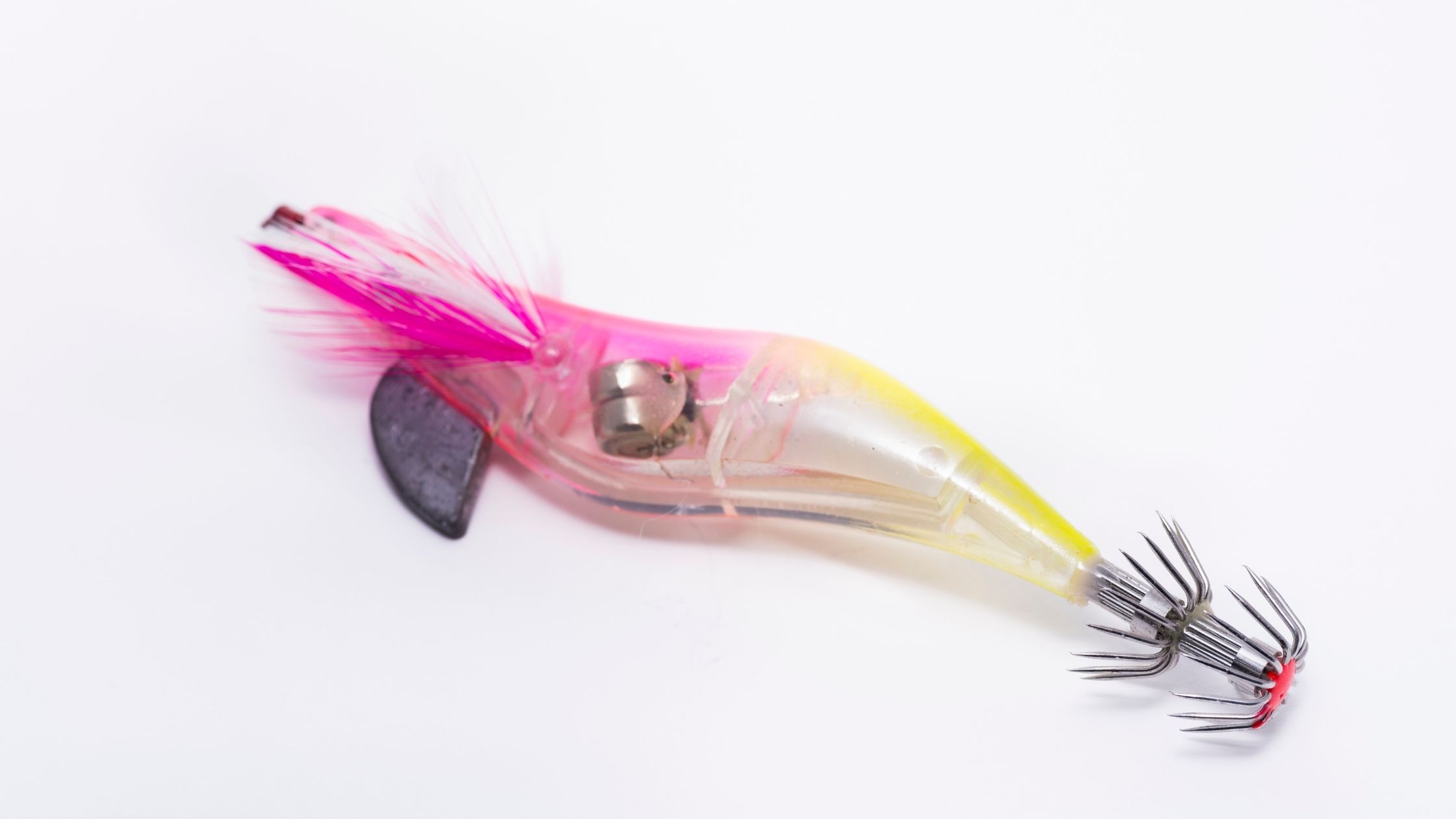
Jigs feature a weighted head on one end and a hook on the other. Some jigs fishing lures are equipped with a plastic grub, while others feature a feather skirt. Because of their weighted head, jigs sink into the water that makes them ideal for luring bottom feeders. To get the maximum benefit out of these fishing lures, lift your rod to retrieve the line and then lower it back. This would create motion, and chances of fish getting attracted to hit will improve.
Spinnerbait
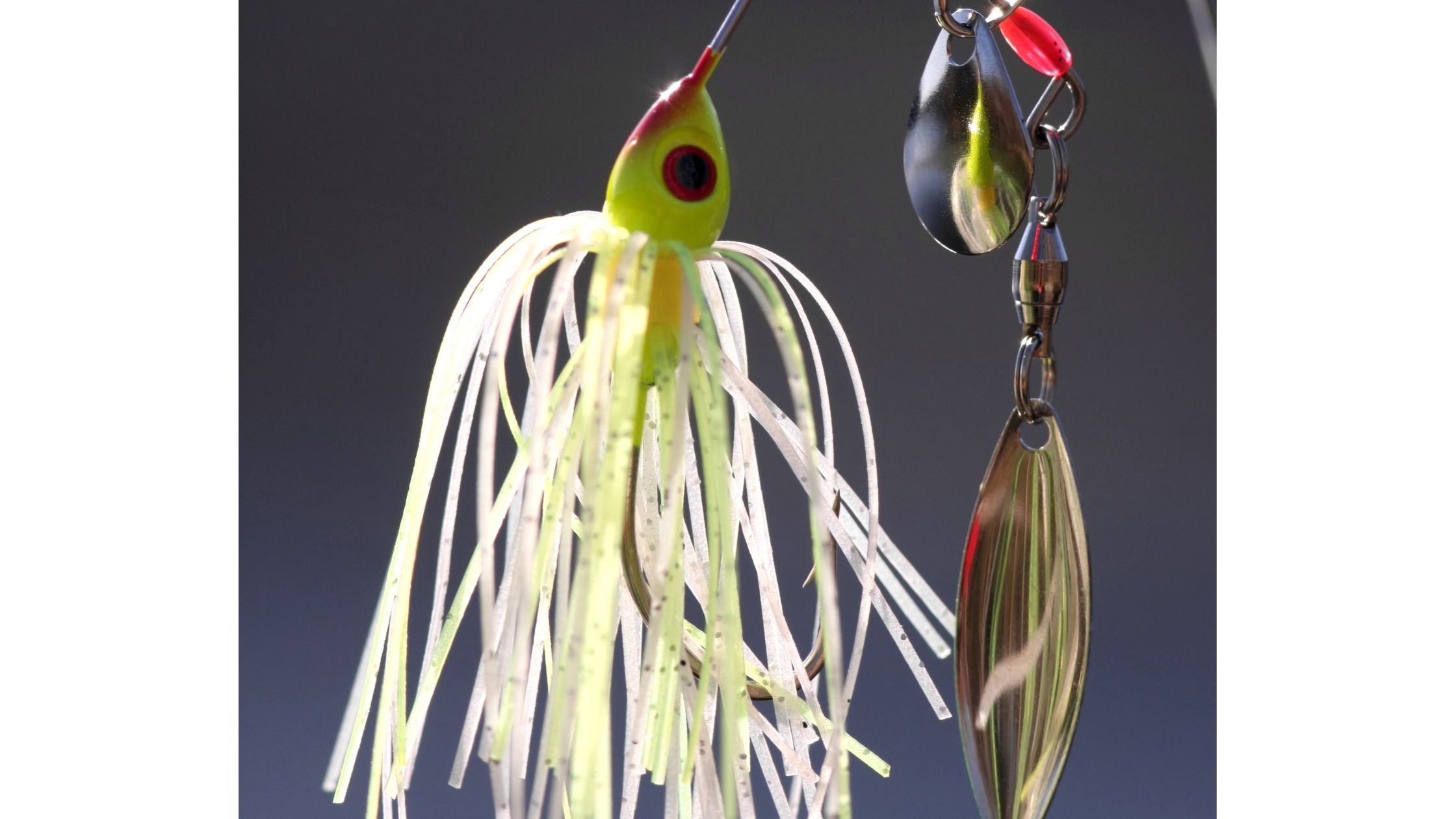
Spinnerbait fishing lures are entirely different types of fishing lures. They move along horizontal access through the water. They come in a massive variety of colors and shapes to suit everyone with varying fishing needs in terms of targeted species and depth. There’s a skirted hook on one end and metal blades on the other. There could be a single or multiple metal blades that spin. When these blades spin, they result in vibration and reflection of color that mimics the movement of minnows and other types of baitfish – making spinner bait fishing lures the best lures for catching hard-to-catch fishes like Pike, Bass, and Perch.
There are many types of spinnerbaits that are suitable for different types of fish. For example, an in-line spinner bait can be used as a trout fishing lure, and the safety-pin spinner is ideal for luring redfish.
Spoons
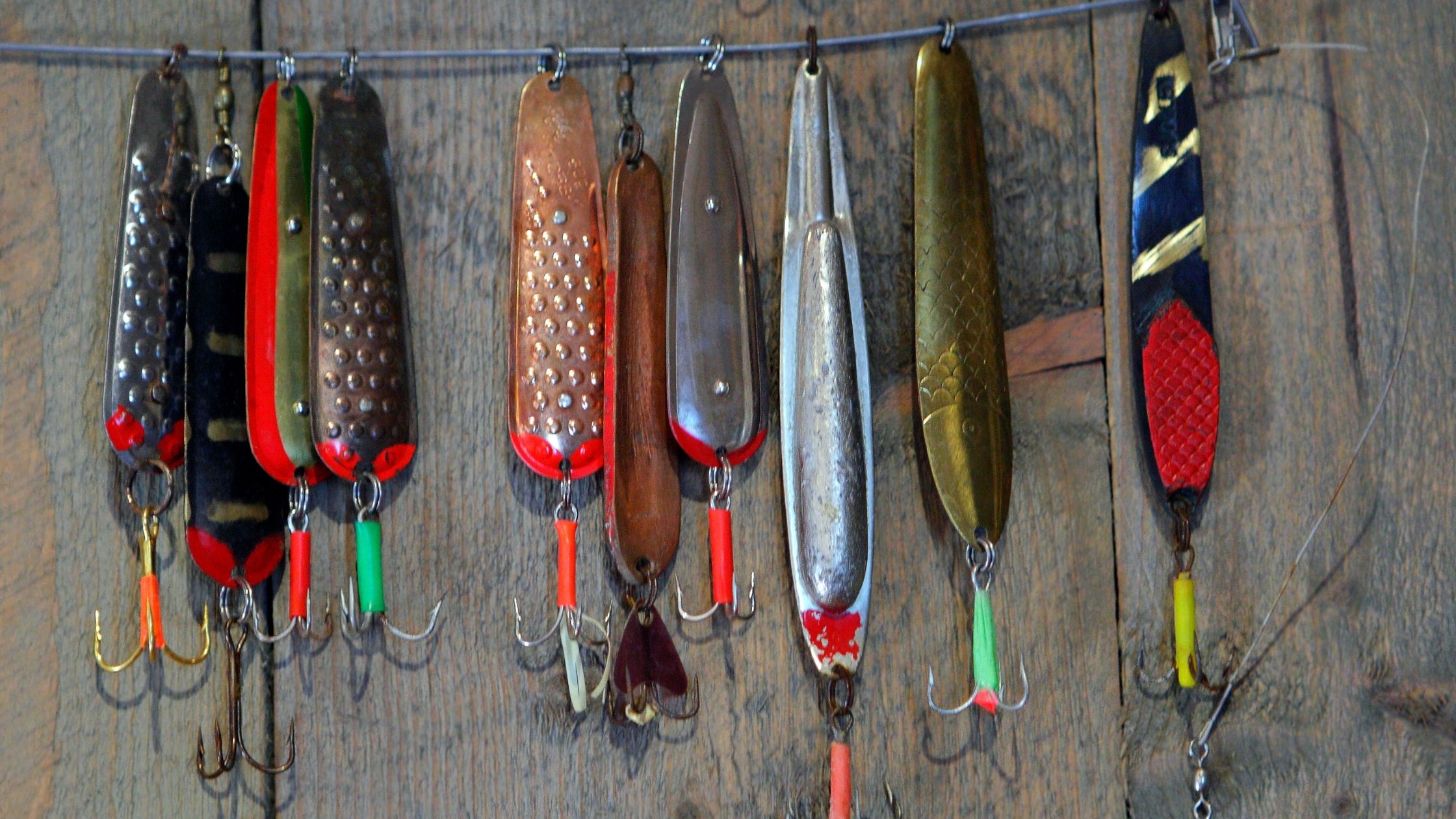
Just like a spoon, spoons fishing lures are curved and concave. They’re made of metal. Because of their concave shape, they shine and wobble as you move them through water, which is how they attract fish. If you want to create a greater wobbling effect, choose a spoons fishing lure that features a bigger concave curve. These fishing lures mimic injured baits that are a favorite snack for fish, and therefore, spoons are one of the best types of fishing lures.
Soft Plastics
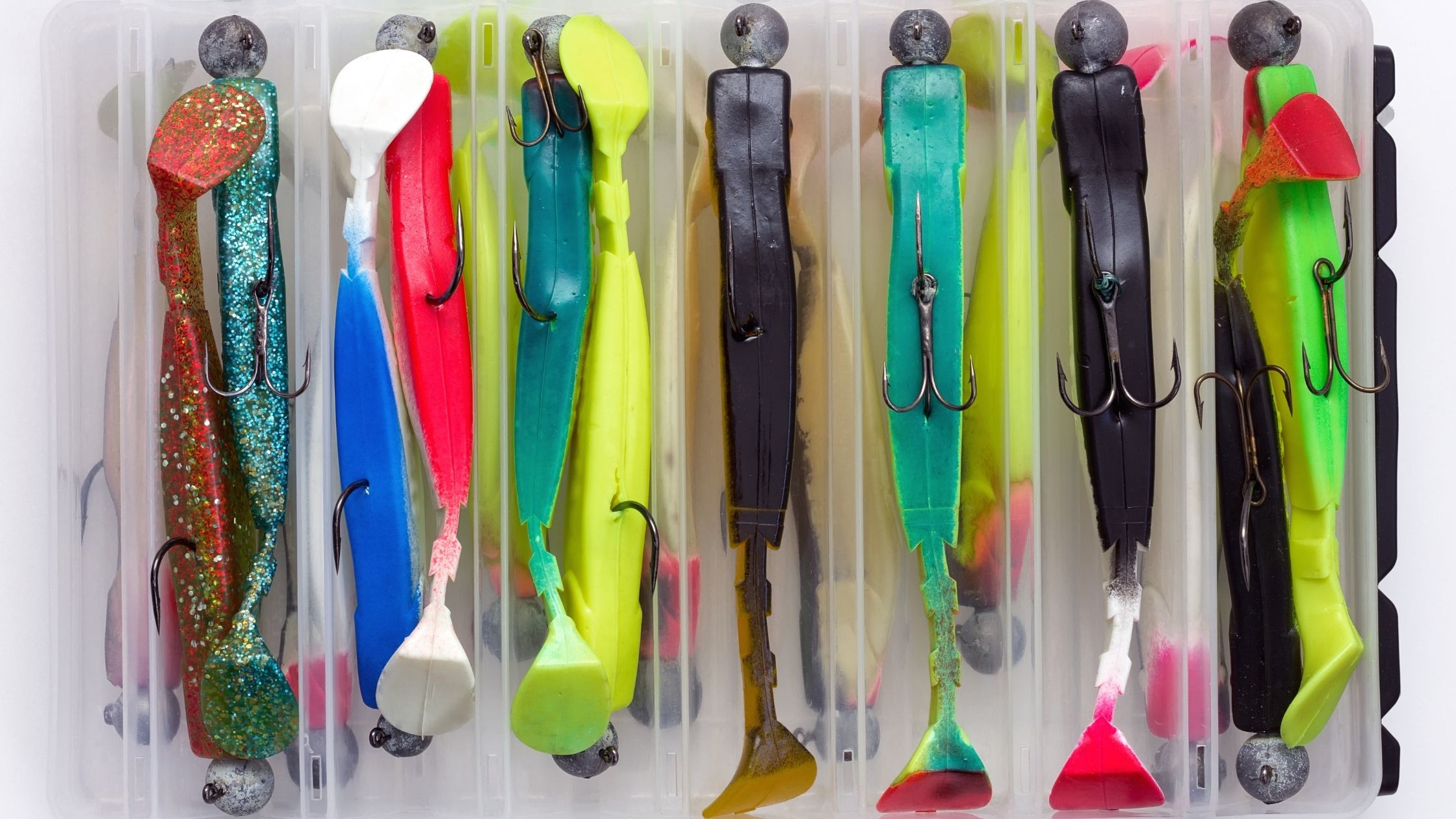
As you can tell by the name, soft plastic fishing lures are soft and rubbery. They imitate aquatic critters like worms, minnows, crawfish, frogs, and lizards. Soft plastic fishing lures are the best types of fishing lures for attracting Bass fish. When you go to buy a soft plastic fishing lure, you’ll feel overwhelmed with the variety of shapes, sizes, and colors. You should choose a color that fits well in the surroundings. If you’re going fishing on a clear day, choose brighter soft plastic fishing lures. These fishing lures mimic the motion of injured creatures, and this attracts plenty of fish.
Flies
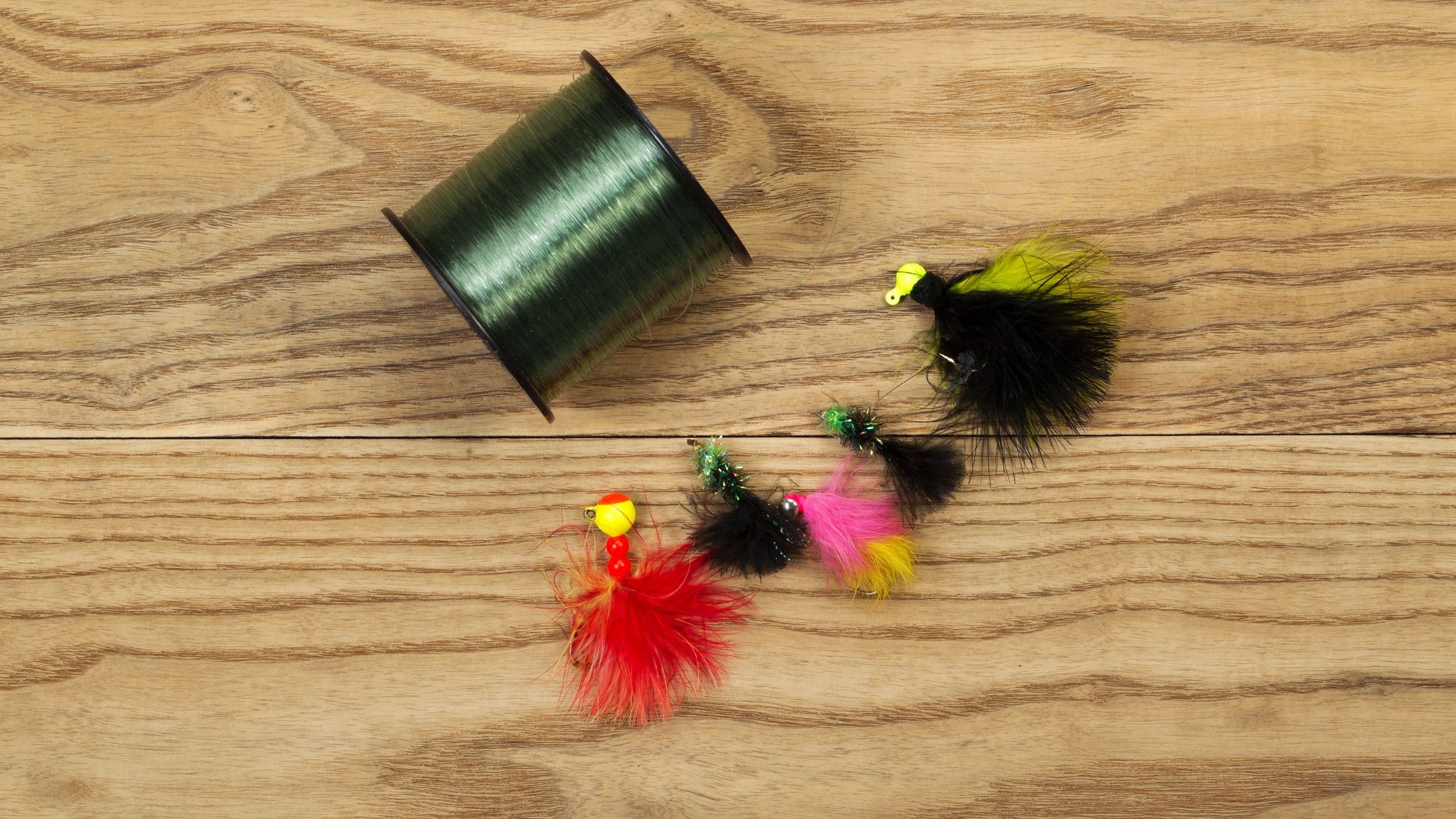
Flies are fishing lures that are used in fly fishing and spin fishing. They feature a single hook and skirt. The skirt is made of thread, feathers, or furs. Flies fishing lures are tied together to resemble insects and hence, attract fish efficiently. Fly fishing lures are ideal for attracting fishes that inhabit near the surface of the water. Subsurface flies are also available for fish that inhabit deeper sections of the water column.
Ice Fishing Lures
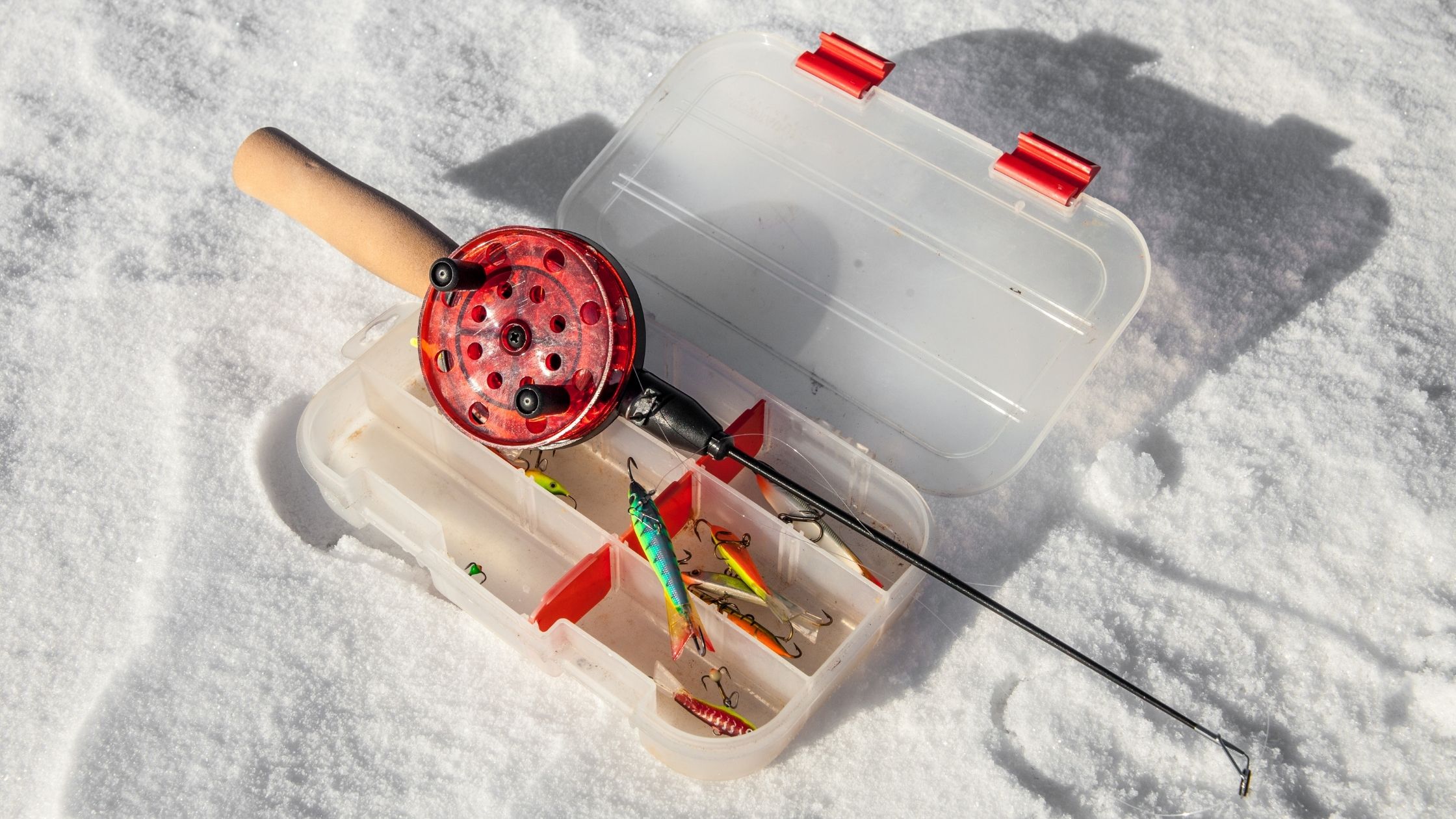
Ice fishing lures are usually small jigs and spoons. They’re special fishing lures that are used for fishing under hard iced water. They can be used as-is, or you can opt to attach a live bait to it. These fishing lures are used to catch fish varieties that are found swimming under hard water like Bluegill, Pike, Trout, and jumbo Perch.
Wooden Fishing Lures
Wooden fishing lures are effective but not the most consistent. They work more effectively than plastic fishing lures. If you want to catch Bass, a wooden fishing lure might do a better job than the newer plastic fishing lures. However, keep in mind that wooden fishing lures don’t always deliver the same performance.
Surf Fishing Lures
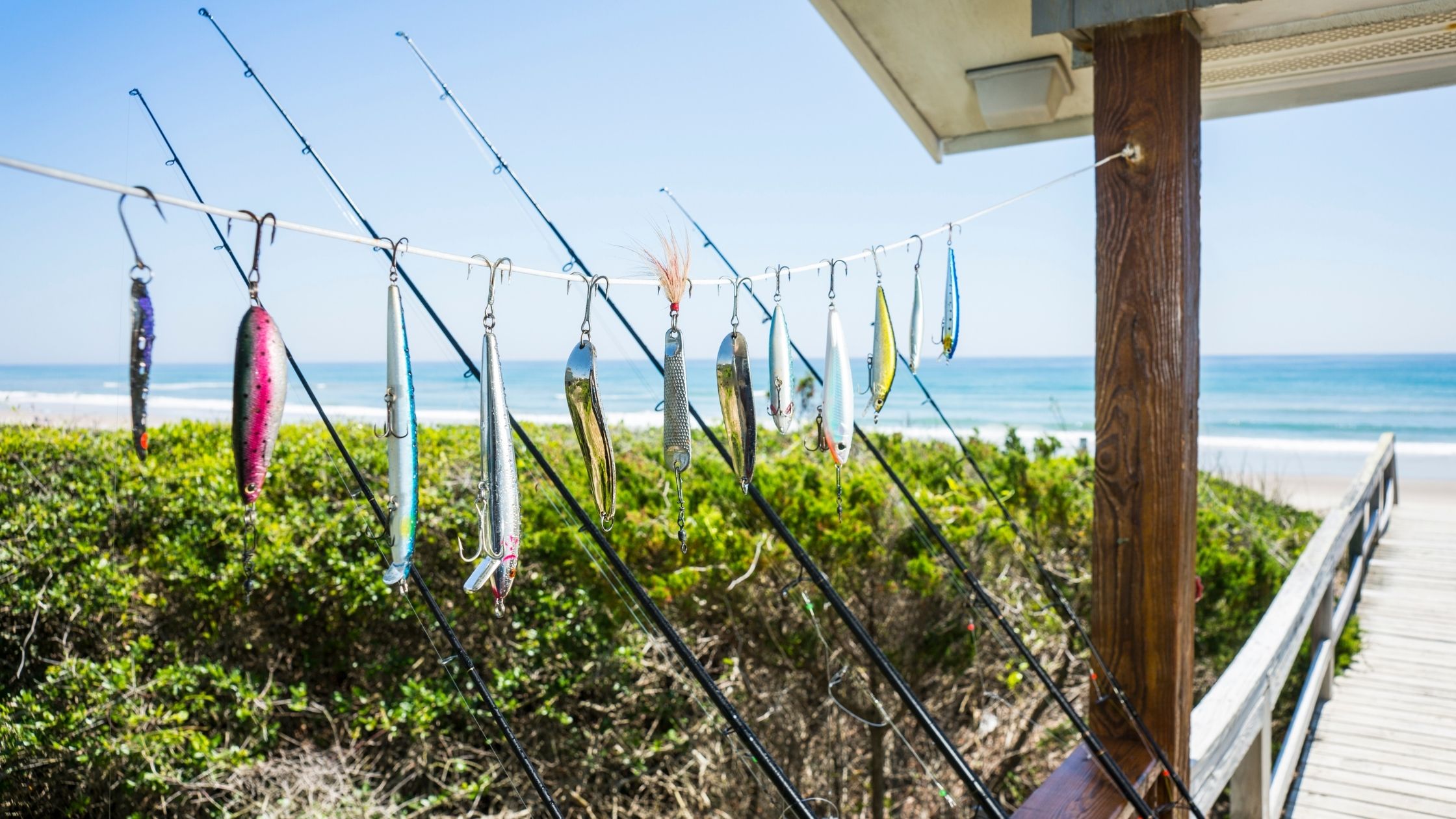
Surf fishing lures include jigs and spoons that are shot into the water while standing at the shore. Surf fishing lures are also called saltwater fishing lures because surf fishing is usually done in saltwater.
Electronic Fishing Lures
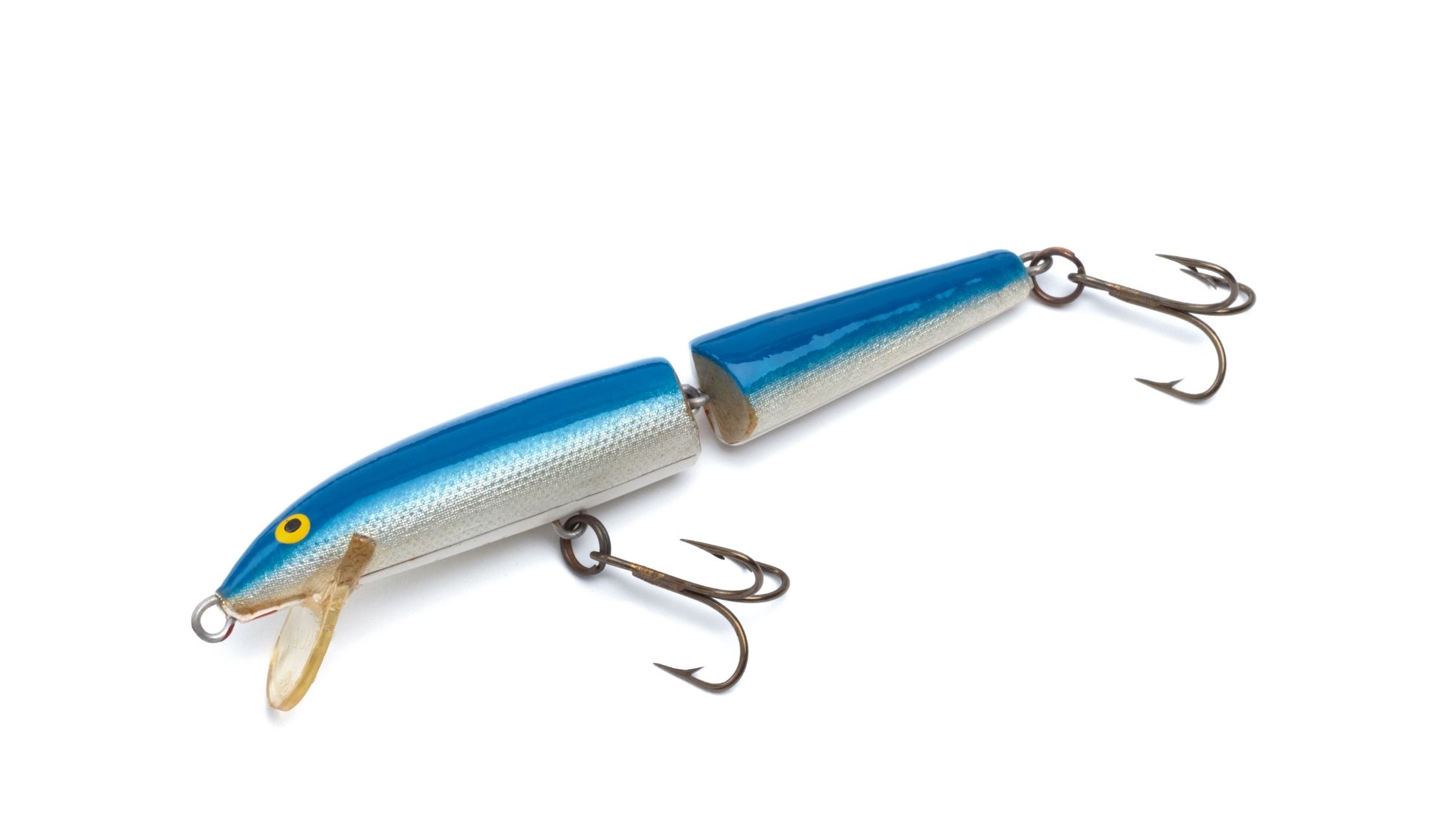
Electronic fishing lures are the newest in the market. They make catching fish extremely easy. With an electronic fishing lure, you don’t need bait. It features a pulsating light that attracts the fish. The features that make electronic fishing lures so popular are their safety and efficiency.
Pond Fishing Lures
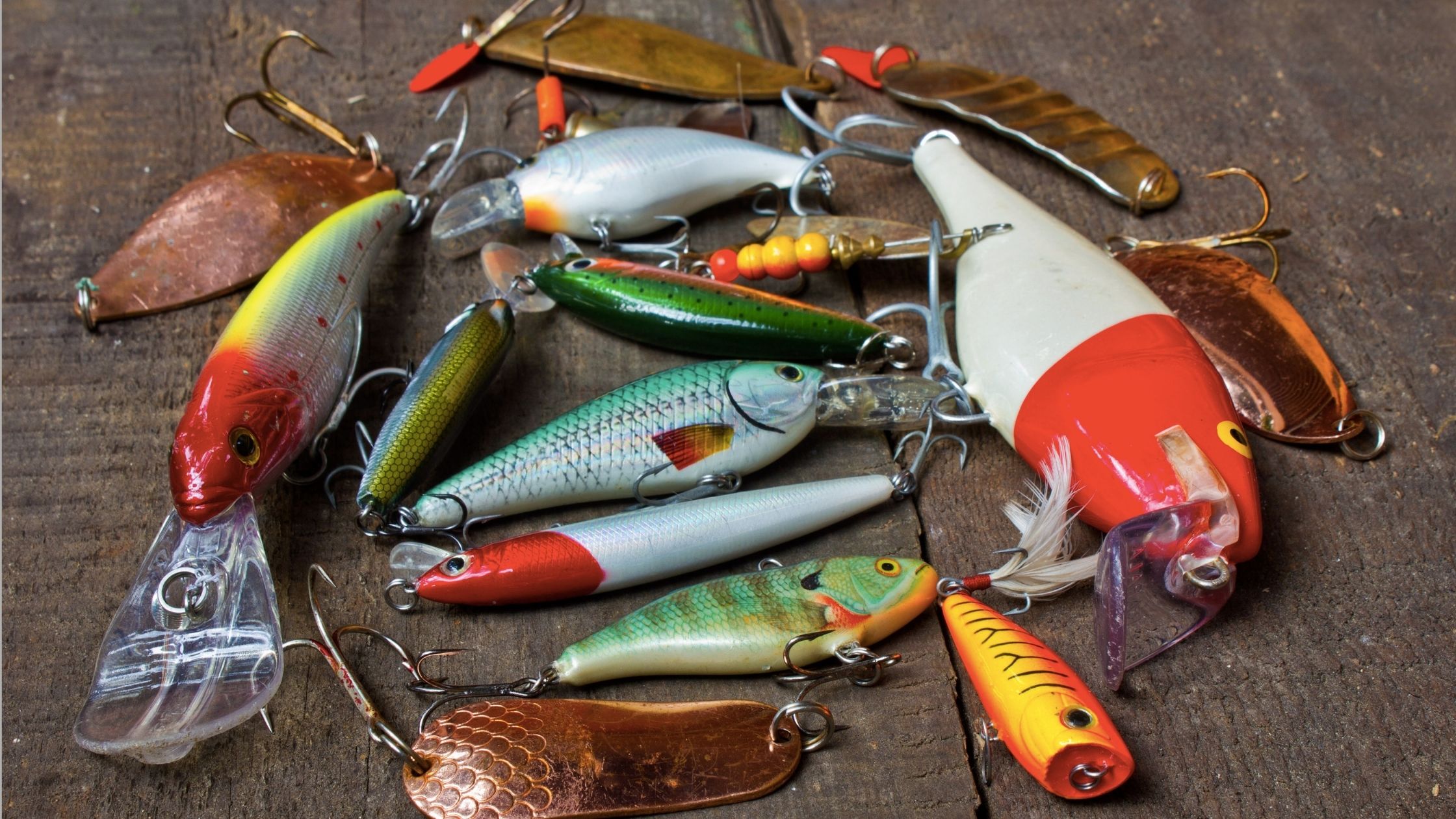
Fishing lures that are meant for fishing in the pond are lighter in weight. Since most ponds aren’t deeper than 20 feet, you wouldn’t need metal lures or heavy jigs that sink in deep. Pond fishing lures are similar to regular fishing lures, only lighter and smaller in size.
Frequently Asked Questions on Types of Fishing Lures
What are the different types of fishing lures?
There are many types of fishing lures, including the following:
- Plugs
- Jugs
- Spoons
- Flies
- Spinnerbait
- Soft plastic fishing lures
- Wooden fishing lures
- Surf fishing lures
- Pond fishing lures
- Ice fishing lures
Do cheap fishing lures work?
Yes. Most cheap fishing lures work just as well as any other fishing lures. They may not be as durable as more expensive ones, but they most definitely don’t differ much when it comes to efficiency.
How to choose the best fishing lure?
If you want to choose the best fishing lure, there are some factors that you must consider.
- Type of fish
- Clarity of water
- Size of fish
- The buoyancy of the lure
- Presence of hooks
Final Thoughts on Types of Fishing Lures
Fishing lures are an essential fishing tool that must be in your fishing box. As we said in the very beginning, fish won’t come to you; you’ve got to attract it towards you. Just having a fishing lure won’t make a difference. Having the right fishing lure is what matters. Now that you know about the various types of fishing lures, it might be easier for you to choose one that’s best for you.
Shop Lures Now
